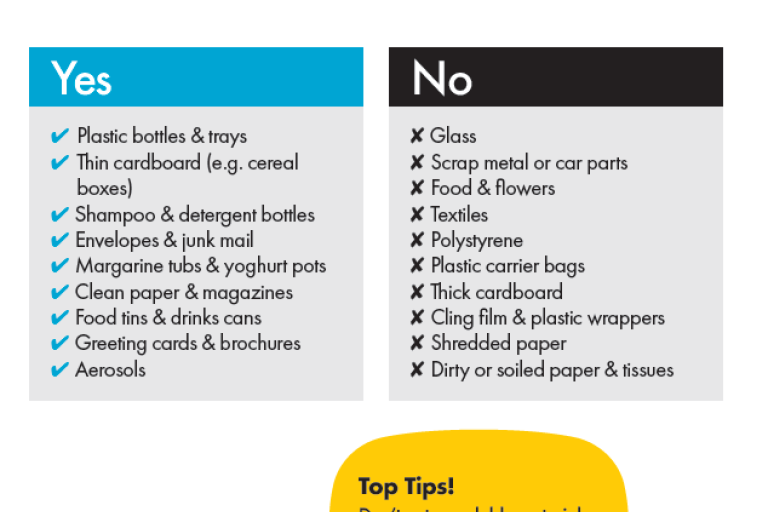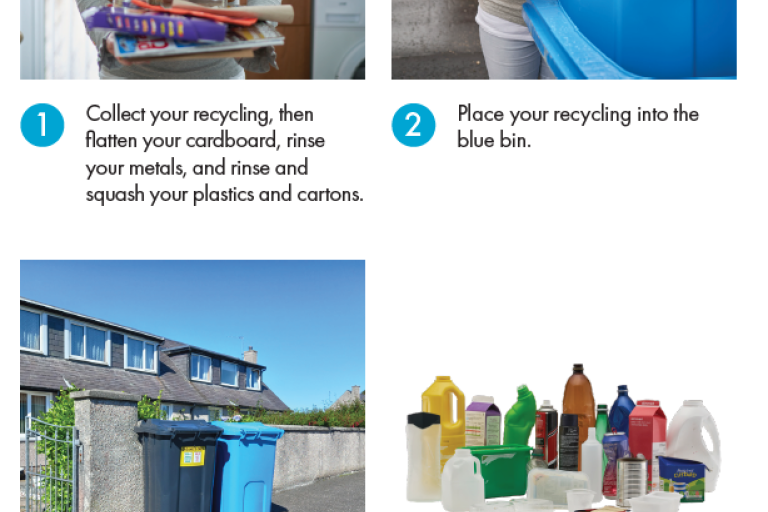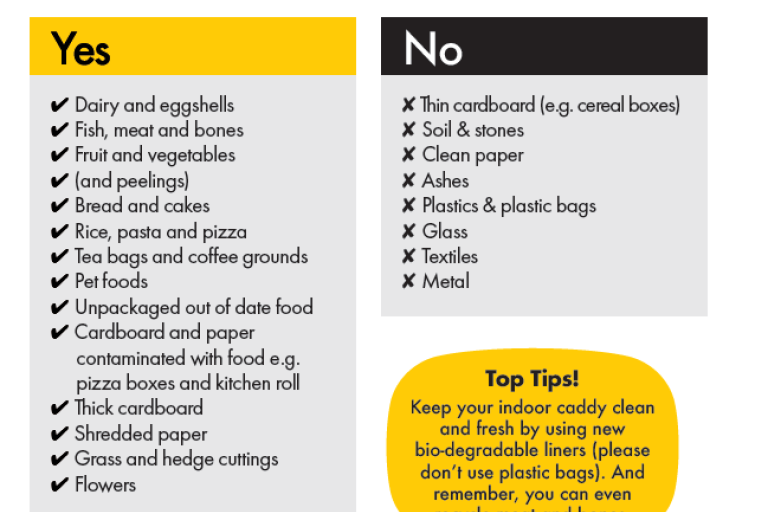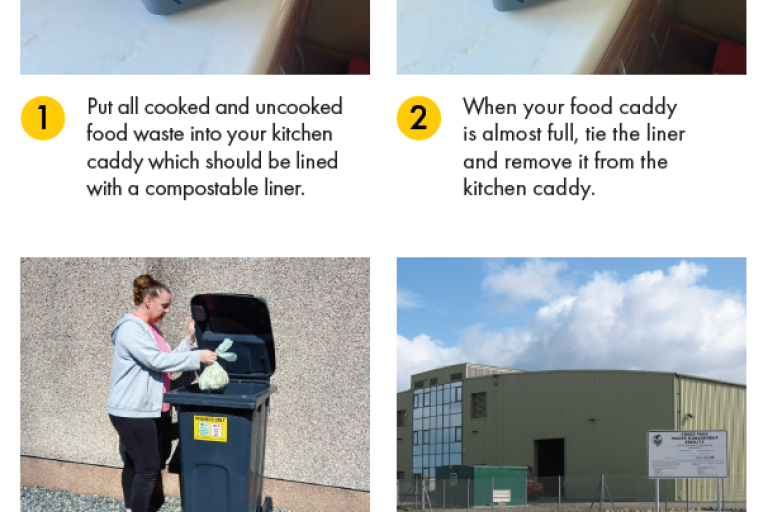Your blue bin is for mixed recycling.
|
It can contain:
|
It cannot contain:
|


Organic Food and Garden Waste / Mixed Recycling (Blue Bin) Collection Schedule for Lewis and Harris
Organic Food / Garden Waste (grey bin with yellow sticker) and Mixed Recycling (blue bin)
Collected every 3 weeks
New Harris, Mackenzie Park, Sinclair Avenue, Back, Marybank, Bernera, Breasclete to Garynahine, Cearns, Stewart Drive
Galson, Shawbost, Carloway, Tolsta Chaolais, Newmarket, Leverburgh, Uig, Lochganvich, Achmore, Scalpay, Harris
South Lochs, Outer Point, Bayble, Ness, Tong, Coll, Harris Bays, Manor
Barvas, Brue, Arnol, Bragar, Water Board Houses, North Tolsta, Gress, Point, Melbost, Parkend, Goathill
Plasterfield, Balallan, North Lochs
Your blue bin is for mixed recycling.
|
It can contain:
|
It cannot contain:
|


Your grey bin with the yellow sticker is for all types of food waste – cooked, uncooked and garden waste.
|
It can contain:
|
It cannot contain:
|

